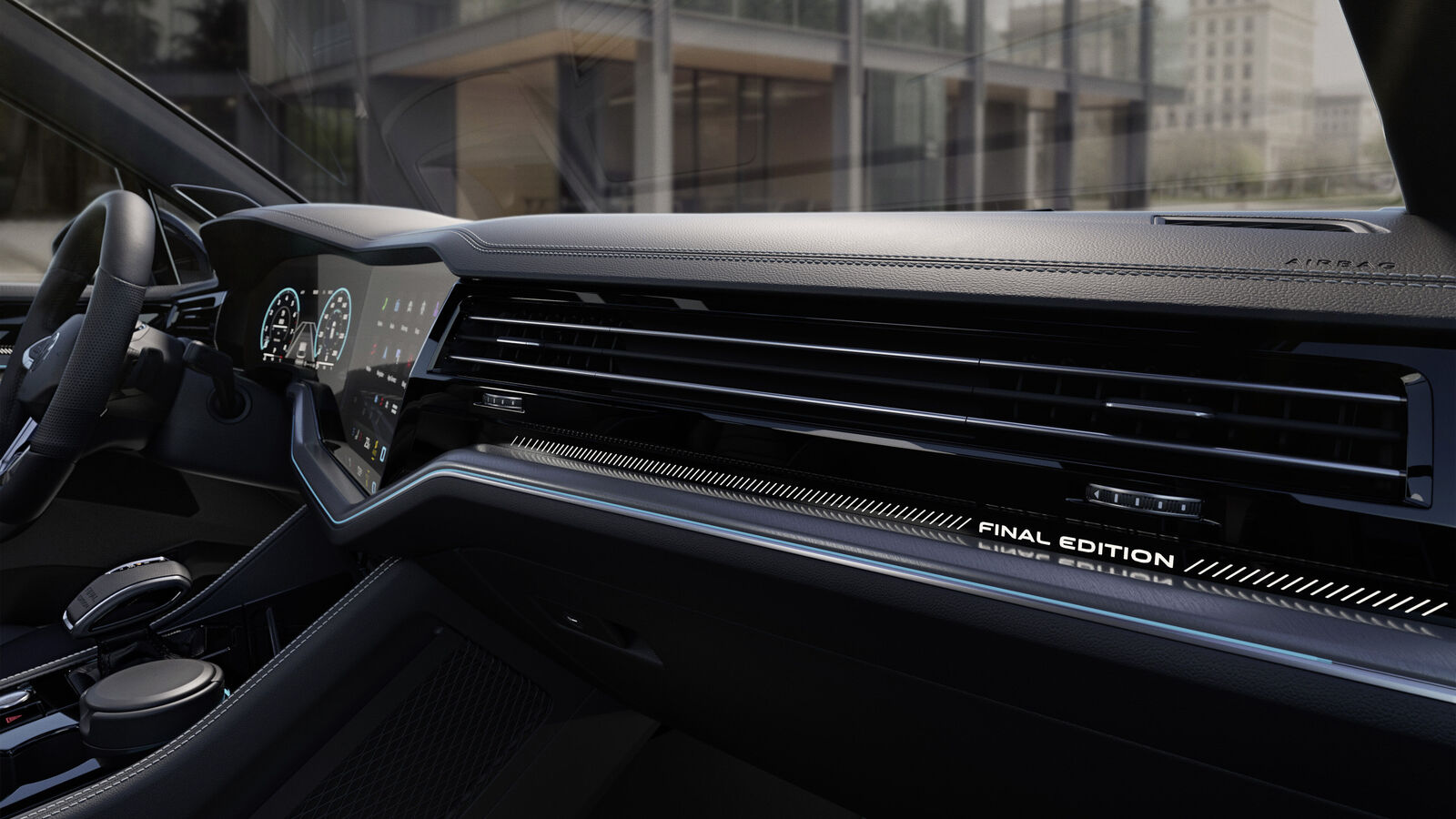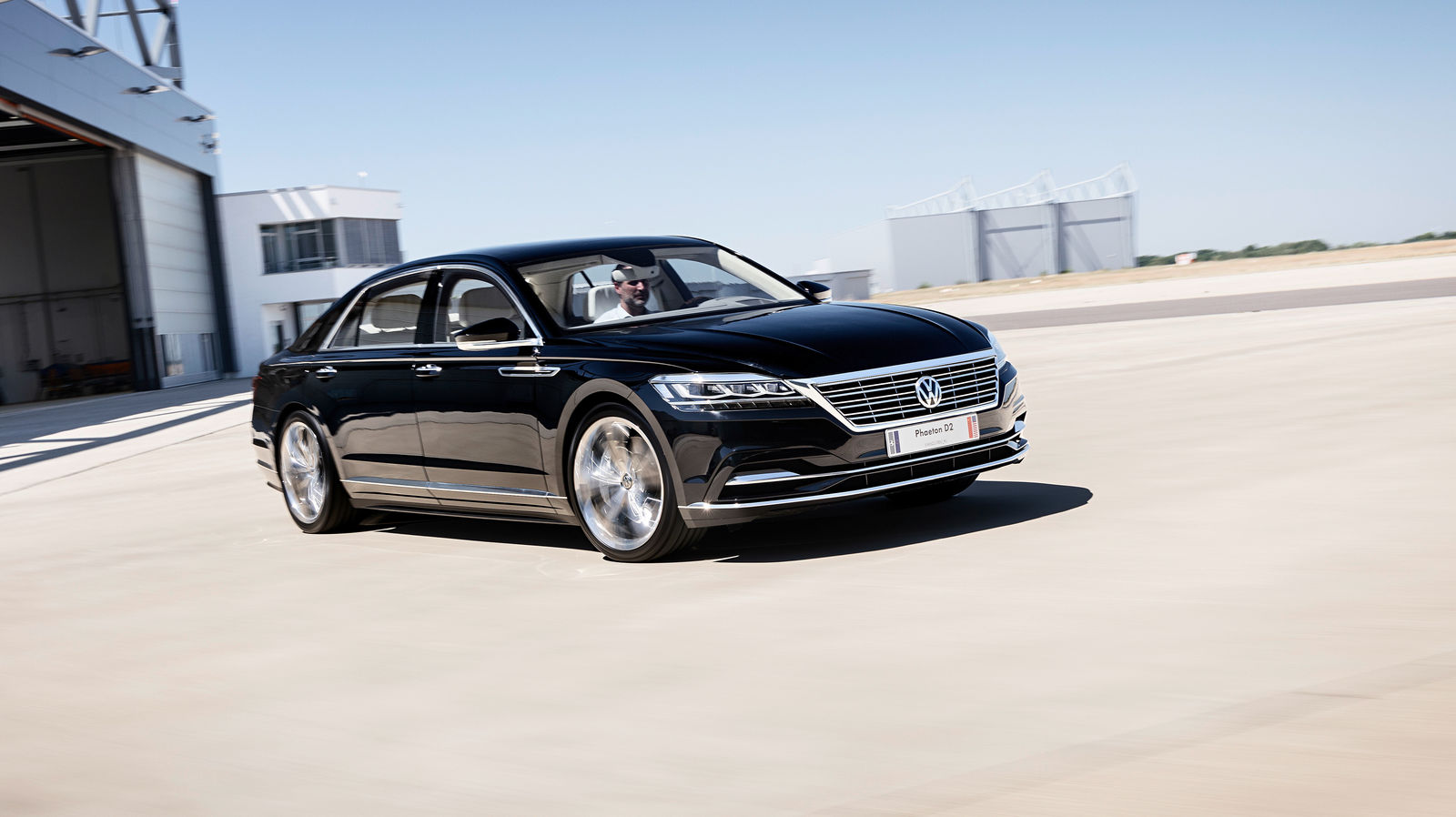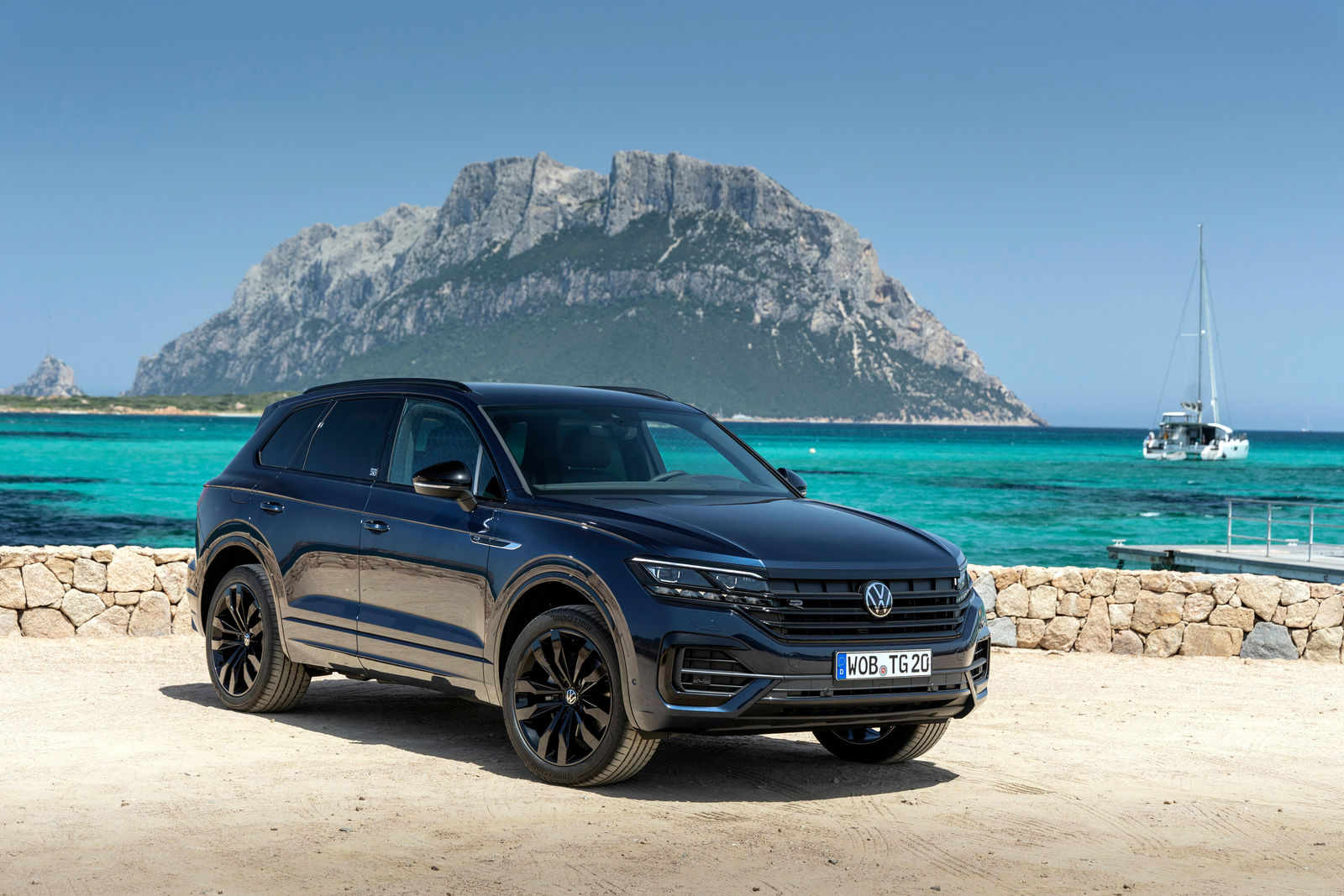three generations.
Touareg I / 2002. Thanks to its numerous innovations, such as the electromechanical roll stabilisation or CDC air suspension with six level settings, the Touareg became one of the most highly regarded SUVs in its class immediately after its market launch in autumn 2002. With this equipment, it was possible to drive through water up to a depth of 58 centimetres or negotiate slopes with inclines of up to 45 degrees. The top-of-the-range model of the Touareg line was the Touareg V10 TDI, which was equipped with the most powerful diesel engine installed at Volkswagen at the time. The 230 kW (313 PS) 5-litre ten-cylinder engine generated a maximum torque of 750 newton metres and accelerated the 2.5-tonne Touareg to 100 km/h in 7.8 seconds. The top speed was 225 km/h. Thanks to this top model, the Volkswagen brand has today become one of the world’s leading full-range providers, successfully covering all important segments from small cars to high-end SUVs. The Touareg I was built





